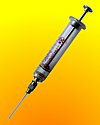
On 15 Jul 1930, Robert Ernest House died at age 54. He was an American physician who championed the use of scopolamine hydrobromide in criminology, which became known as a “truth serum.” Based on research into its use as a general birth anaesthetic by J. Christian Gauss, House interpreted from the results that a patient in the twilight state was unable to tell a lie. From 1924, House convinced Texas criminologists, to use the drug to “assist” in determination of guilt or innocence of a suspect. Later, it was found by legal challenges and CIA research in the 1950s that House's confidence was misplaced; its value was very much exaggerated. Any “truth” confessed under the drug's influence was distorted by the drug's halucinogenic side effects. Such use was ended. (Scopolamine is still used in minute doses to control motion sickness, and as a veterinary preanesthetic medication.) You can read about the initial attention Dr. House received in the New York Times on 22 Oct 1924, in this report on the article “‘Truth Serum’ Test Proves Its Power.”

On 15 Jul 1941, development work began on the penicillin mold cultures Howard Florey and Norman Heatley had brought with them from England to the Northern Regional Research Lab of the U.S. Dept of Agriculture in Peoria, Illinois. The goal was to produce sufficient quantities for treatment of the many wartime military casualties. Europe was already embroiled in World War II, and it was expected America would soon be drawn into the fighting.
Today's book pick is: The Mold in Dr. Florey's Coat: The Story of the Penicillin Miracle (John MacRae Books), by Eric Lax. The author reveals that although Alexander Fleming is recognized for the discovery of the penicillium mold, his research was limited. In fact, far greater credit is due to Florey and Heatley for pursuing the mass-production of the world’s first viable antibiotic. There is much to learn about the long path, with its twists and turns, to get the drug to market. Lax lays out a narrative that grabs your attention. The name of penicillin is likely familiar to you, while its story is not, which you can remedy by reading this book.
The title refers to the way the mold was impregnated in the jacket Dr. Florey wore so that if he was forced to flee his Oxford laboratory due to enemy invasion, he could carry a secret sample with him.
It is available from Amazon, typically about New from $15.40. Used from $2.19. (As of earlier time of writing - subject to change.)
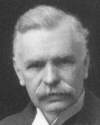 | Just as the spectroscope opened up a new astronomy by enabling the astronomer to determine some of the constituents of which distant stars are composed, so the seismograph, recording the unfelt motion of distant earthquakes, enables us to see into the earth and determine its nature with as great a certainty, up to a certain point, as if we could drive a tunnel through it and take samples of the matter passed through. |
 | We know less about the ocean's bottom than about the moon's back side. |
 | I sometimes think about the tower at Pisa as the first particle accelerator, a (nearly) vertical linear accelerator that Galileo used in his studies. |
| Before you look at today's web page, see if you can answer some of these questions about the events that happened on this day. Some of the names are very familiar. Others will likely stump you. Tickle your curiosity with these questions, then check your answers on today's web page. | |
| Births | |
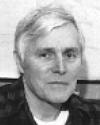 | On 15 Jul 1928, Carl R. Woese, was born, an American microbiologist who recognized the existence of the organisms Archaea as a third domain of life, distinct from the two domains of bacteria. On 2 Nov 1977, his identification of methanogens, a form of life dating back some 3.5 billion years, was reported from the University of Illinois. They are found in oxygen-deficient environments, and mostly obtain their energy by reducing CO2 and oxidizing hydrogen. Why are they called methanogens? |
 | On 15 Jul 1943, Jocelyn Bell Burnell was born, a British astronomer who, at age 24, discovered the first four examples of a type of star emitting an unusual stellar radio signal-a rapid series of pulses repeating every 1.337 sec. The signal was not man-made so the star was at first given a fun nickname, LGM, for Little Green Men. By what formal name at these LGM stars now known? |
| Deaths | |
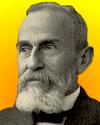 | Eugen Bleuler (1857-1939) was a Swiss psychiatrist, who introduced a new term (1908) to describe the disorder previously known as dementia praecox. For his studies of this condition, he was one of the most influential psychiatrists of his time. By what name is this disorder now known? |
| Events | |
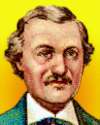 | On 14 Jul 1869, margarine was patented by Hippolyte Mège Mouriés in Paris for use by the French Navy. Emperor Napoleon III had set up a contest to find a suitable substitute for butter, and Mège-Mouriés was the winner. His formula included a fatty component that when mixed, had a pearly luster. The American dairy industry resisted the introduction of margarine in the U.S. For years, they pressed Congress to impose many legislative restrictions on margarine production. What is the meaning of the Greek word on which he based the name for his product? |
 | On 15 Jul of a certain year, the first commercial jet transport airplane built in US, the Boeing 707 prototype, made its maiden flight from Renton Field, south of Seattle, Washington. In which decade did this test flight take place? |
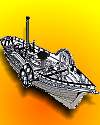 | On 1783, the first successful steamboat, the Pyroscaphe, made a trial river run, propelled by paddle wheels. The inventor's earlier—unsuccessful—steam-powered boat was driven by a hinged flap suggested by the webbed feet of an aquatic bird. In which country was this river trip made by the first successful steamboat? |
Fast answers for the previous newsletter for July 14: Fred Maytag • purple • Augustin Jean Fresnel • Mars • the decade including the year 1914.
 If you enjoy this newsletter, the website, or wish to offer encouragement or ideas, please send feedback by using your mail reader Reply button.
If you enjoy this newsletter, the website, or wish to offer encouragement or ideas, please send feedback by using your mail reader Reply button. Your click on a Facebook, StumbleUpon, or other social button on the site webpages is also a welcome sign of appreciation. Thank you for using them.
© This newsletter is copyright 2020 by todayinsci.com. Please respect the Webmaster's wishes and do not put copies online of the Newsletter — or any Today in Science History webpage. (If you already have done so, please remove them. Thank you.) Offline use in education is encouraged such as a printout on a bulletin board, or projected for classroom viewing. Online, descriptive links to our pages are welcomed, as these will provide a reader with the most recent revisions, additions and/or corrections of a webpage. For any other copyright questions, please contact the Webmaster by using your mail reader Reply button.
--
If you do not want to receive any more newsletters, Unsubscribe
To update your preferences and to unsubscribe visit this link
Executive Real Estate Business Class
Blog Archive
-
▼
2021
(585)
-
▼
July
(50)
- Newsletter for Saturday 31 July.
- Newsletter for Friday 30 July.
- Power off and play this summer!
- Newsletter for Thursday 29 July.
- Newsletter for Wednesday 28 July.
- Newsletter for Tuesday 27 July.
- Newsletter for Monday 26 July.
- Newsletter for Sunday 25 July.
- Newsletter for Saturday 24 July.
- Newsletter for Friday 23 July.
- Newsletter for Thursday 22 July.
- Newsletter for Wednesday 21 July.
- Newsletter for Tuesday 20 July.
- Newsletter for Monday 19 July.
- The Machines That Built America Premieres Tonight
- Newsletter for Sunday 18 July.
- Newsletter for Saturday 17 July.
- Newsletter for Friday 16 July.
- Newsletter for Thursday 15 July.
- Newsletter for Wednesday 14 July.
- Newsletter for Tuesday 13 July.
- On This Day for July 12 - Geraldine Ferraro design...
- Newsletter for Monday 12 July.
- Inventing ‘The Machines That Built America’
- On This Day for July 11 - Duel between Aaron Burr ...
- Newsletter for Sunday 11 July.
- On This Day for July 10 - Telstar 1 launched, John...
- Newsletter for Saturday 10 July.
- On This Day for July 9 - Catherine the Great assum...
- Newsletter for Friday 9 July.
- New Season! Hope, Through History Podcast
- On This Day for July 8 - Vasco da Gama's first voy...
- Newsletter for Thursday 8 July.
- Ending soon: savings that pop! 🎆
- On This Day for July 7 - Hawaiian Islands annexed ...
- Newsletter for Wednesday 7 July.
- On This Day for July 6 - Anne Frank forced into hi...
- Newsletter for Tuesday 6 July.
- On This Day for July 5 - Israel's Law of Return pa...
- Newsletter for Monday 5 July.
- On This Day for July 4 - Declaration of Independen...
- Newsletter for Sunday 4 July.
- July 4th Sale at the HISTORY Store!
- On This Day for July 3 - Battle of Gettysburg ende...
- Newsletter for Saturday 3 July.
- On This Day for July 2 - Civil Rights Act signed, ...
- Newsletter for Friday 2 July.
- July 4th savings that pop!
- On This Day for July 1 - Dominion of Canada establ...
- Newsletter for Thursday 1 July.
-
▼
July
(50)
-
Blogroll
-
About
HistoryFact










0 comments:
Post a Comment